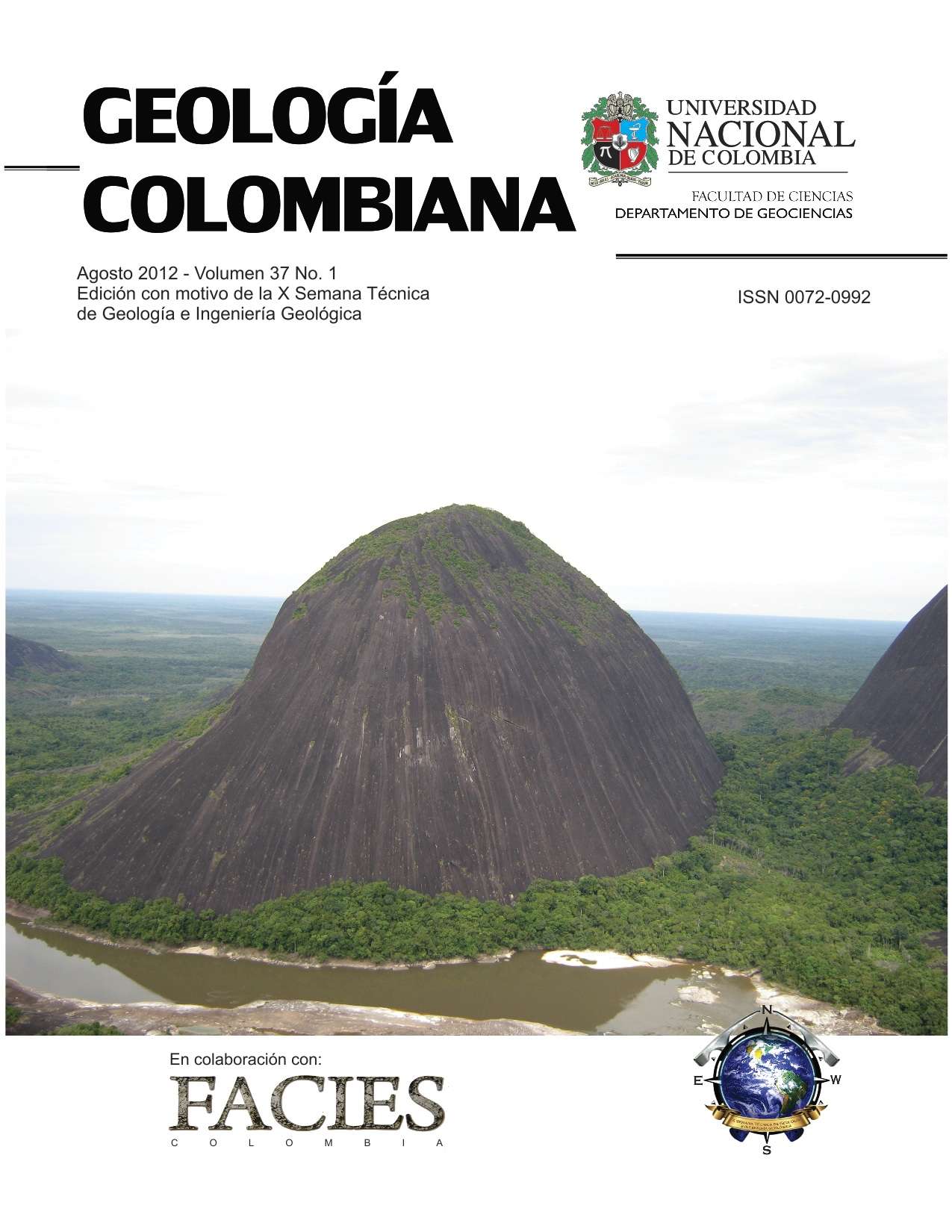Separation of the Guajira-Bonaire pair: 65-50Ma exhumation followed by 300 km right-lateral transtensional deformation
Palabras clave:
Provenance, Caribbean, conglomerates, U Pb LA ICPMS, Eocene. (es)Descargas
1 Corporación Geológica Ares, Calle 57 No. 23-09 of 202, Bogotá, Colombia.
szapatah@gmail.com
2 Departamento de Procesos y Energía, Universidad Nacional de Colombia Sede Medellín,
Medellín, Colombia
agustincardonam@gmail.com
3 Geociencias, Universidad de Los Andes, Departamento de Geología, Bogotá, Colombia.
4 School of Earth and Environmental Sciences, Washington State University, Pullman, USA
5Department of Geosciences, University of Arizona, Tucson, USA
Upper Eocene fluvial strata in the Island of Bonaire contain detrital components that were tracked to the basement massifs of the Guajira Peninsula in northern of Colombia. These components confirm previous hypothesis that the Guajira-Bonaire pair constitute a tectonic piercing point along the southern Caribbean Plate margin that was right-laterally displaced approximately 300km after middle Eocene times. Other possible sources, the nearby Curaҫao and the far away Santa Marta Massif, did not pass statistical similarity and overlap tests. U-Pb LA-ICP-MS from the metamorphic boulders of the Soebi Blanco Formation in Bonaire yields Grenvillian ages (1084Ma, 1130Ma and 1184Ma), while the detrital zircons recovered from the sandy matrix of the conglomerates contain populations with peaks of 1000 - 1200Ma, 750 - 950Ma and 200 – 300 Ma. Overlap and similarity tests run between these populations and published data from Guajira yield values of 0.750 and 0.680, which are significantly higher than the same comparison against the Santa Marta Massif (0.637 and 0.522), and the Curaҫao Island (0.629 and 0.467). Thermogeochronological results from the metamorphic clasts yield Paleocene-middle Eocene ages (65 – 50Ma) that confirm not only a regional-scale cooling event in this time period, but also help constrain the maximum depositional age (50Ma) of the poorly dated Soebi Blanco Formation.












